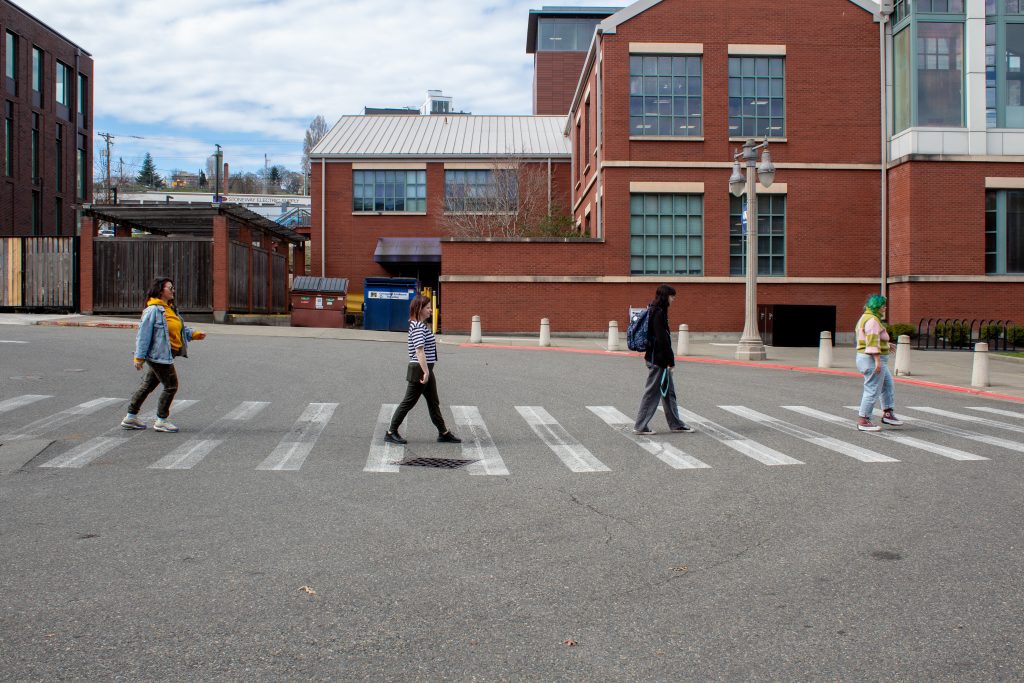Vision Zero is the solution we need for Tacoma traffic
With the right combination of policy and infrastructure changes, traffic fatalities can become a completely avoidable tragedy.

How many car accidents have you been in?
How many times have you narrowly avoided being hit by a car on a crosswalk near campus?
Many people accept traffic injury and death as inherent risks in their everyday life.
What if I told you that this was completely preventable?
In 2020, Tacoma City Council voted to adopt the Vision Zero Action Plan, a commitment to eliminate car traffic fatalities and serious injuries by 2030. This will be accomplished through a combination of policy changes, such as reducing speed limits and increasing driver education and awareness, along with infrastructure changes, such as installing flashing lights at crosswalks and narrowing roads to encourage voluntary speed reduction. These changes are desperately needed.
Traffic safety is an issue for downtown Tacoma and the UWT campus. For a city of its size, Tacoma has a startlingly high traffic fatality rate. Every 5 days, one person in Tacoma is seriously injured or killed due to a traffic accident. The majority of traffic accident victims fall in the 20-39 age group range and are most likely to be pedestrians or bicyclists. This means that the average UWT student that walks, buses, or bikes to campus is in the highest risk category for being a traffic fatality in all of Tacoma.
Traffic accidents are also an equity issue. Tacoma’s 2022 Vision Zero action plan overlaid a map of the city’s high-risk roads with a map of the city’s equity index. The same areas of our city that are considered “Low” and “Very Low” on our equity index are home to a majority of unsafe roads in Tacoma. The most economically vulnerable residents of Tacoma are most likely to live along the most dangerous traffic networks.
Tacoma is not the first city to adopt the Vision Zero concept. Since its inception in Sweden in 1997, the movement has spread to cities all over the globe. Even when imperfectly implemented, Vision Zero delivers results: from 2010 to 2020, New York City reduced its traffic death incident by 19% and from 2018 to 2022, Hoboken, NJ, did not have a single traffic death on its records. The evidence is clear that even in densely populated, foot traffic-heavy areas, policy and infrastructure changes can avert traffic injury and death.
Detractors of Vision Zero argue that no combination of policy and infrastructure can realistically achieve this outcome, and for that reason, we should not allocate funding and effort toward this goal. Other naysayers express unfounded suspicion towards Vision Zero for being a concept created overseas in a country known for its socialistic style of political policy.
Vision Zero is the best tool we have to fix Tacoma traffic.
Eliminating traffic deaths by 2030 is a lofty goal, but that is exactly what we need. We should not risk throwing out a ‘perfect’ goal unless we are willing to forgo any improvement at all. This is why it’s so important that Tacoma sticks with Vision Zero: even if we do not completely eliminate traffic injury and death, we can dramatically reduce the phenomenon. Any lives saved make the effort worthwhile.
As a personal bonus, it would make the crosswalks around campus safer.



